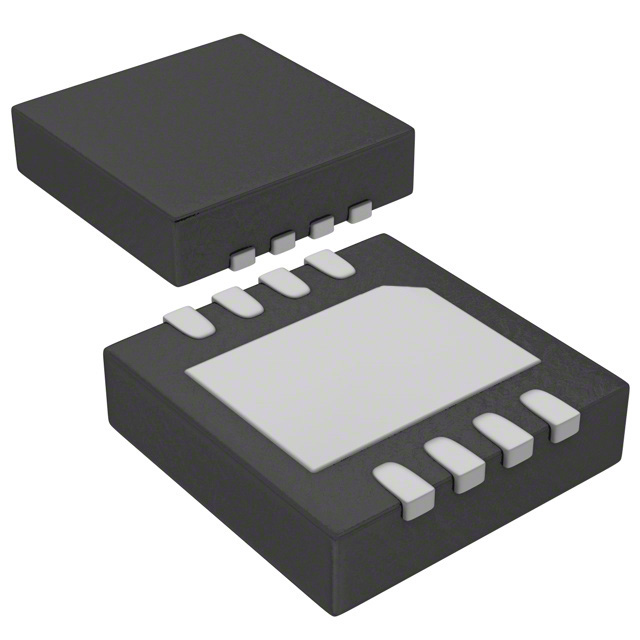Xem thông số kỹ thuật để biết chi tiết sản phẩm.

AD8657ACPZ-R7
Product Overview
Category: Integrated Circuit (IC)
Use: The AD8657ACPZ-R7 is a low noise, rail-to-rail output operational amplifier designed for precision applications. It is commonly used in audio amplification, sensor signal conditioning, and other low voltage applications.
Characteristics: - Low noise: The AD8657ACPZ-R7 offers a low input voltage noise density of 5.5 nV/√Hz, making it suitable for applications requiring high precision. - Rail-to-rail output: This operational amplifier provides a wide output voltage range that extends to the supply rails, allowing for maximum dynamic range. - Low power consumption: With a typical supply current of 1.2 mA, the AD8657ACPZ-R7 is energy-efficient and well-suited for battery-powered devices. - High gain bandwidth product: The device has a gain bandwidth product of 10 MHz, enabling it to handle high-frequency signals accurately.
Package: The AD8657ACPZ-R7 comes in a small form factor, lead-free LFCSP package, which stands for Lead Frame Chip Scale Package. This package offers excellent thermal performance and ease of handling during assembly.
Essence: The essence of the AD8657ACPZ-R7 lies in its ability to provide low noise, rail-to-rail output amplification with high precision and low power consumption.
Packaging/Quantity: The AD8657ACPZ-R7 is typically sold in reels or tubes, with a quantity of 250 units per reel/tube.
Specifications
- Supply Voltage Range: 2.7 V to 5.5 V
- Input Offset Voltage: ±0.5 mV (maximum)
- Input Bias Current: ±1 pA (maximum)
- Output Voltage Swing: Rail-to-rail
- Gain Bandwidth Product: 10 MHz
- Supply Current: 1.2 mA (typical)
Detailed Pin Configuration
The AD8657ACPZ-R7 has a total of 8 pins, which are as follows:
- VOUT: Output pin for the amplified signal.
- VIN-: Inverting input pin.
- VIN+: Non-inverting input pin.
- V-: Negative power supply pin.
- NC: No connection pin.
- V+: Positive power supply pin.
- NC: No connection pin.
- GND: Ground pin.
Functional Features
- Low noise amplification: The AD8657ACPZ-R7 provides high precision amplification while minimizing the introduction of additional noise.
- Rail-to-rail output swing: The operational amplifier can drive signals close to the supply rails, maximizing the dynamic range.
- Wide supply voltage range: It operates from a supply voltage as low as 2.7 V, making it suitable for battery-powered applications.
- High gain bandwidth product: The device can accurately amplify high-frequency signals up to 10 MHz.
Advantages and Disadvantages
Advantages: - Low noise performance enables precise signal amplification. - Rail-to-rail output allows for maximum dynamic range. - Low power consumption makes it suitable for portable devices. - Small form factor package enhances thermal performance and ease of handling.
Disadvantages: - Limited supply voltage range compared to some other operational amplifiers. - May not be suitable for applications requiring extremely high gain or bandwidth.
Working Principles
The AD8657ACPZ-R7 is based on a differential amplifier configuration that amplifies the voltage difference between its inputs. It utilizes a combination of active components and feedback networks to achieve the desired amplification characteristics. The rail-to-rail output stage ensures that the amplified signal can swing close to the supply rails, providing maximum output voltage range.
Detailed Application Field Plans
The AD8657ACPZ-R7 finds applications in various fields, including:
- Audio amplification: It can be used in audio systems to amplify low-level signals with high fidelity.
- Sensor signal conditioning: The operational amplifier can accurately condition sensor signals for further processing or measurement.
- Portable devices: Its low power consumption and small package make it suitable for battery-powered portable devices such as smartphones, tablets, and wearable electronics.
- Medical instrumentation: The low noise characteristics of the AD8657ACPZ-R7 make it suitable for medical equipment requiring precise signal amplification.
Detailed and Complete Alternative Models
- AD8655: Similar to the AD8657ACPZ-R7, this operational amplifier offers low noise and rail-to-rail output swing but has a lower gain bandwidth product.
- AD8628: This alternative model provides ultra-low noise performance and rail-to-rail output swing, making it suitable for demanding precision applications.
- AD8510: With a higher gain bandwidth product, this operational amplifier is designed for applications requiring wider frequency response.
Liệt kê 10 câu hỏi và câu trả lời thường gặp liên quan đến ứng dụng AD8657ACPZ-R7 trong giải pháp kỹ thuật
Sure! Here are 10 common questions and answers related to the application of AD8657ACPZ-R7 in technical solutions:
Q: What is the AD8657ACPZ-R7? A: The AD8657ACPZ-R7 is a low noise, rail-to-rail input/output operational amplifier (op-amp) designed for precision applications.
Q: What is the supply voltage range for the AD8657ACPZ-R7? A: The AD8657ACPZ-R7 operates from a single supply voltage ranging from 2.7V to 5.5V.
Q: What is the typical gain bandwidth product (GBW) of the AD8657ACPZ-R7? A: The AD8657ACPZ-R7 has a typical GBW of 10 MHz.
Q: Can the AD8657ACPZ-R7 operate with a dual power supply? A: No, the AD8657ACPZ-R7 is designed to operate with a single power supply only.
Q: What is the input voltage range of the AD8657ACPZ-R7? A: The AD8657ACPZ-R7 has a rail-to-rail input voltage range, meaning it can accept input signals that span the entire supply voltage range.
Q: What is the output voltage swing of the AD8657ACPZ-R7? A: The AD8657ACPZ-R7 has a rail-to-rail output voltage swing, allowing it to drive signals close to the supply rails.
Q: Does the AD8657ACPZ-R7 have built-in protection features? A: Yes, the AD8657ACPZ-R7 includes features like thermal shutdown and current limit protection to ensure safe operation.
Q: What is the input bias current of the AD8657ACPZ-R7? A: The AD8657ACPZ-R7 has a low input bias current of typically 1 pA.
Q: Can the AD8657ACPZ-R7 be used in low power applications? A: Yes, the AD8657ACPZ-R7 has a low quiescent current of typically 500 µA, making it suitable for low power designs.
Q: What are some typical applications for the AD8657ACPZ-R7? A: The AD8657ACPZ-R7 can be used in various applications such as sensor interfaces, data acquisition systems, medical instrumentation, and audio amplification.
Please note that these answers are general and may vary depending on specific design requirements and conditions.

